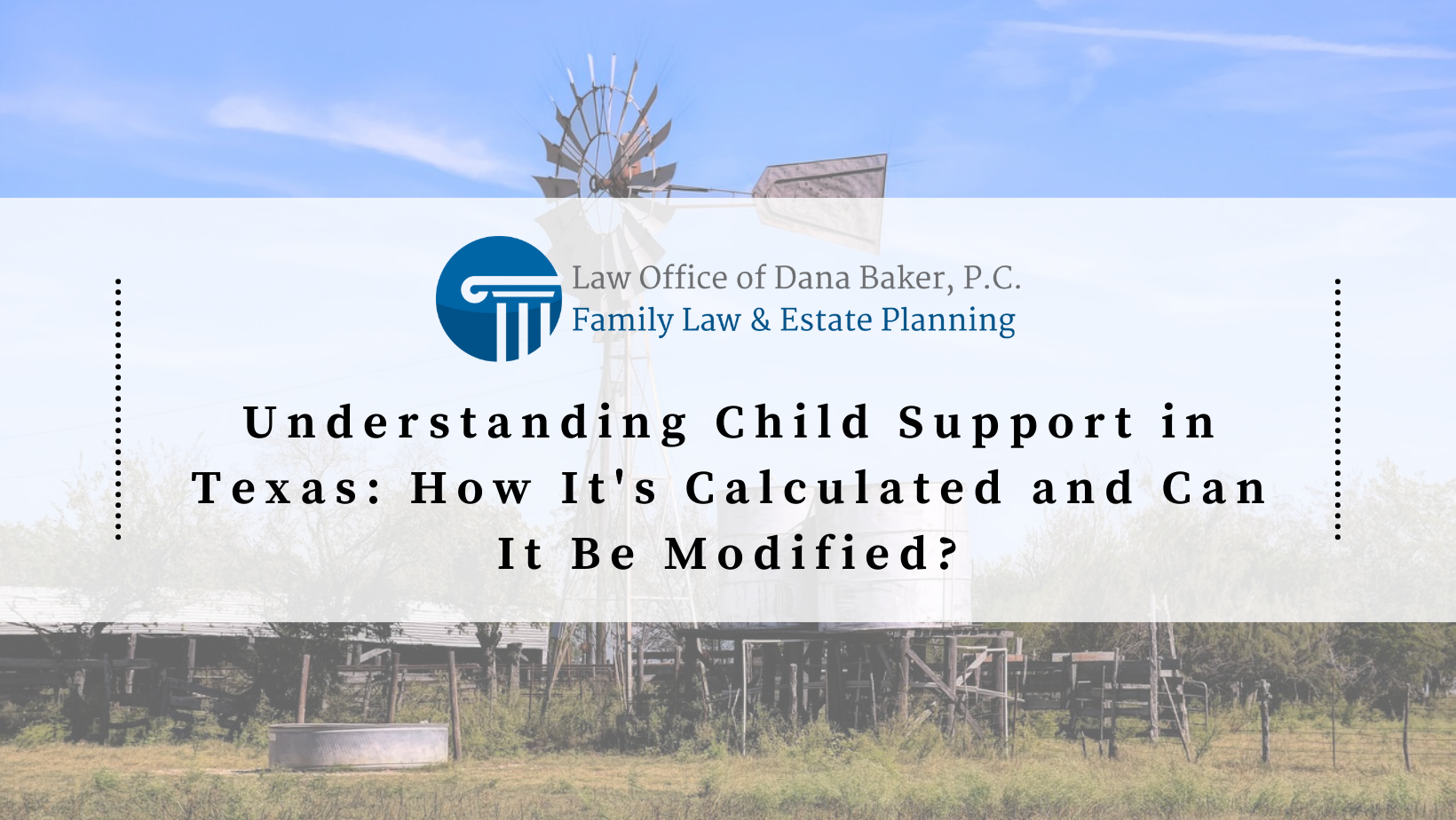Schedule Your Free 15-Minute Phone Consultation
(979) 865-0000

When going through a divorce or custody battle in Texas, one of the primary concerns many parents have relates to child support. It’s crucial to understand how child support is determined, as well as the circumstances under which it can be modified. In this blog post, we’ll break down the essentials of child support calculation in Texas and discuss potential modifications.
How Is Child Support Calculated in Texas?
In Texas, child support is primarily calculated using a set percentage of the non-custodial parent’s net resources. Here’s a brief breakdown of how it works:
It’s worth noting that these are general guidelines. The court can order child support amounts that differ from these guidelines if evidence shows that the needs of the child or children are either significantly higher or lower than what the guideline amounts would provide.
Can Child Support Be Modified in the Future?
Yes, child support can be modified under certain circumstances:
Child support is an essential component of ensuring that children receive adequate care and resources following a divorce or separation. It’s based on a set of guidelines but can be adjusted to fit the specific needs of the child or the financial circumstances of the parents. If you believe that a modification might be necessary in your situation, or if you have further questions about how child support works in Texas, it’s wise to consult with a Texas family law attorney who can provide guidance tailored to your situation.